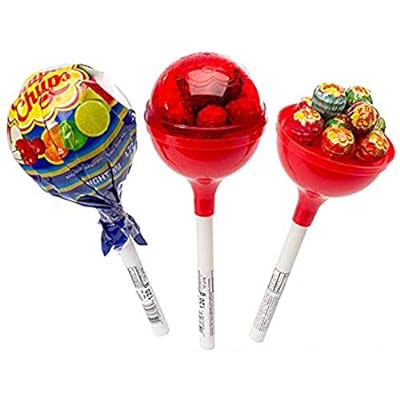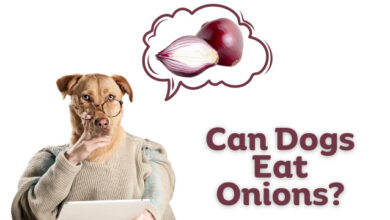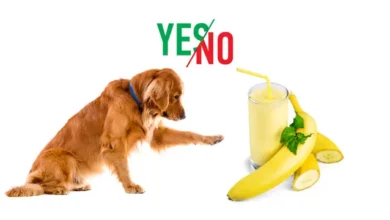
As pet owners, we all know the irresistible urge to share our favorite treats with our furry friends. Whether it’s a piece of candy or a lick of ice cream, we love to see their tails wag with joy. But when it comes to lollipops, things get a bit tricky.
You might wonder, “Can dogs eat lollipops?” While it might seem harmless to let your dog have a little taste, there are hidden dangers that could affect their health. Dogs have unique dietary needs and sensitivities, and what’s a fun treat for us can turn into a health hazard for them.
In this article, we’ll delve into why lollipops are not safe for dogs, the potential risks they pose, and explore some safe alternatives that can keep your dog’s tail wagging without any worries. Understanding these aspects is key to ensuring our beloved pets stay healthy and happy. So, let’s dive in and learn how to make the best choices for our canine companions.
Table of Contents
- Can Dogs Eat Lollipops?
- What Are Lollipops?
- Can Dogs Eat Lollipops? Understanding the Risks for Dogs
- Symptoms of Lollipop Ingestion in Dogs
- Preventing Accidental Ingestion
- What to Do If Your Dog Eats a Lollipop
- Conclusion
Can Dogs Eat Lollipops?
No, dogs should not eat lollipops.
Lollipops are not safe for dogs due to their high sugar content, artificial sweeteners, and potential choking hazards. Sugar can lead to obesity, diabetes, and dental problems in dogs. Sugar-free lollipops often contain xylitol, an artificial sweetener that is extremely toxic to dogs, causing rapid insulin release, hypoglycemia, and even liver failure. Additionally, the stick and hard candy can pose serious choking risks or cause gastrointestinal blockages if swallowed. It’s best to keep lollipops and similar treats out of reach and provide your dog with safe, healthy alternatives instead.
Read More: Can Dogs Eat Banana Peppers ?
What Are Lollipops?

Lollipops are colorful, nostalgic candies on sticks, popular with both kids and adults. Made from sugar, corn syrup, and flavorings, they are boiled, molded, and hardened into a glossy treat. Often, they include food colorings, citric acid for tanginess, or bits of fruit or candy inside.
Types of Lollipops
- Sugar-Based Lollipops: Traditional lollipops made from sugar and corn syrup, available in many colors and shapes.
- Sugar-Free Lollipops: Made with artificial sweeteners like aspartame or sorbitol. Be cautious, as some contain xylitol, which is toxic to dogs.
- Flavored Lollipops: Available in various exotic flavors like cotton candy and bubblegum, often containing artificial flavors and colors.
Understanding these details helps explain why lollipops aren’t safe for dogs and what alternatives are better.
Read More: Can Dogs Eat Tamales ?
Can Dogs Eat Lollipops? Understanding the Risks for Dogs
No, dogs should not eat lollipops due to several significant risks:
- High Sugar Content: Lollipops are loaded with sugar, which can lead to obesity, diabetes, and dental issues in dogs. Consuming too much sugar can cause long-term health problems.
- Artificial Sweeteners: Many sugar-free lollipops contain xylitol, an artificial sweetener that is extremely toxic to dogs. Even a small amount can cause a rapid release of insulin, leading to hypoglycemia (low blood sugar), seizures, liver failure, and can be fatal.
- Choking Hazards: The stick and hard candy pose serious choking risks. If swallowed, the stick can cause gastrointestinal blockages or internal injuries, requiring immediate veterinary intervention.
Given these risks, it is best to keep lollipops away from dogs and provide them with safe, dog-friendly treats instead.
Read More: Can Dogs Eat Yellow Rice ?
Symptoms of Lollipop Ingestion in Dogs
If your dog manages to get their paws on a lollipop, it’s important to know what signs to look for and how to respond quickly. Recognizing the symptoms and taking immediate action can make a big difference in your dog’s health.
Common Symptoms to Watch For
When a dog ingests a lollipop, several symptoms might appear, depending on the ingredients and how much they ate:
- Vomiting and Diarrhea: The high sugar content or any artificial sweeteners can upset your dog’s stomach, leading to vomiting and diarrhea. This is the body’s way of trying to get rid of the harmful substances.
- Lethargy: If your dog seems unusually tired or lacks energy, it could be a sign that their body is struggling to process the sugar or other harmful ingredients.
- Loss of Coordination: Artificial sweeteners like xylitol can cause a rapid drop in blood sugar, leading to symptoms such as wobbliness or difficulty walking.
- Seizures: In severe cases, especially with xylitol ingestion, your dog might experience seizures. This is a critical condition that needs immediate veterinary attention.
- Choking or Coughing: If your dog has ingested the stick or a large piece of candy, they might cough, gag, or show signs of choking.
Read More: Can Dogs Eat Egg Rolls ?
Preventing Accidental Ingestion
Keeping your dog safe from harmful foods, like lollipops, requires a bit of vigilance and planning. Here are some practical tips to ensure your furry friend doesn’t accidentally get into something they shouldn’t.
Safe Storage Practices
One of the simplest ways to prevent your dog from eating something dangerous is to store it safely out of reach:
- Use High Cabinets: Store all candy, chocolate, and other dangerous foods in high cabinets that your dog can’t access. Avoid leaving them on countertops or tables where a curious dog might reach.
- Secure Containers: Invest in pet-proof containers for storing food. Containers with secure lids can help prevent your dog from sniffing out and getting into tasty but dangerous treats.
- Childproof Locks: If your dog is particularly crafty and can open cabinets, consider using childproof locks to keep them out.
Training Tips to Keep Dogs Away from Harmful Foods
Training your dog to avoid certain areas or foods can be very effective:
- Leave It Command: Teach your dog the “leave it” command. This is useful not only for avoiding harmful foods but also for general safety. Practice this command regularly with treats that you don’t allow your dog to eat.
- Boundary Training: Train your dog to stay out of the kitchen or dining area while you’re preparing and eating food. This reduces the risk of them grabbing something harmful off the counter or floor.
- Positive Reinforcement: Reward your dog for good behavior, such as staying away from food on the table or not begging. Positive reinforcement helps reinforce the behavior you want to see.
Educating Family and Friends About Pet Safety
Ensuring everyone in your household understands the importance of pet safety is crucial:
- Inform and Educate: Talk to family members and frequent visitors about the dangers of feeding dogs human food, especially sweets like lollipops. Make sure they understand the specific risks associated with certain ingredients.
- Clear Communication: Make a household rule that no one feeds the dog any food without checking first. This helps prevent accidental sharing of harmful treats.
- Signs and Reminders: Place reminders or signs in the kitchen or dining area to reinforce the importance of not feeding the dog from the table.
By implementing these strategies, you can significantly reduce the risk of your dog accidentally ingesting something harmful. Up next, we’ll discuss what to do if your dog does eat something they shouldn’t.
Read More: Can Dogs Eat Orange Chicken ?
What to Do If Your Dog Eats a Lollipop
Despite our best efforts, accidents can happen. If your dog eats a lollipop, knowing how to respond quickly and effectively can make a big difference in their health and well-being. Here’s what you need to do:
First Aid Measures
If you discover that your dog has eaten a lollipop, follow these immediate steps:
- Stay Calm: Your dog can pick up on your anxiety, so staying calm helps them remain calm as well.
- Remove the Lollipop: If there are any remnants of the lollipop left, remove them from your dog’s reach to prevent further ingestion.
- Check for Choking: Ensure that your dog is not choking on any part of the lollipop, especially the stick. If they are, try to remove the obstruction carefully or perform the Heimlich maneuver for dogs if you know how.
When to Contact a Veterinarian
Knowing when to call the vet is crucial. Here are some scenarios that require immediate veterinary attention:
- Ingestion of Xylitol: If the lollipop contains xylitol, contact your veterinarian immediately. Xylitol is extremely toxic to dogs, even in small amounts.
- Symptoms of Poisoning: If your dog shows any symptoms like vomiting, diarrhea, lethargy, loss of coordination, or seizures, call your vet right away.
- Swallowed Stick: If your dog has swallowed the stick, this can cause a blockage or internal damage. Seek veterinary advice immediately.
Possible Treatments and Outcomes
Once at the vet, several treatments might be necessary, depending on what your dog ingested and their symptoms:
- Induced Vomiting: If your dog ate the lollipop very recently, the vet might induce vomiting to prevent further absorption of harmful substances.
- Activated Charcoal: This can be administered to absorb any remaining toxins in the stomach and intestines.
- IV Fluids: In cases of severe poisoning or xylitol ingestion, your dog may need intravenous fluids to maintain hydration and support their liver and kidneys.
- Monitoring and Support: Your vet will monitor your dog’s vital signs and provide supportive care as needed. This might include medications to control symptoms like seizures or nausea.
- Surgery: If your dog swallowed the stick and it’s causing a blockage, surgery might be required to remove it.
The outcomes can vary. With prompt treatment, most dogs recover fully from accidental ingestion of lollipops. However, severe cases, especially involving xylitol or intestinal blockages, can be more complicated and require longer recovery times.
Knowing these steps can help you act quickly and effectively if your dog eats something they shouldn’t, ensuring they get the care they need to recover safely.
Read More: Can Dogs Eat Babybel Cheese ?
Conclusion
As we wrap up, it’s crucial to remember that while lollipops might be a delightful treat for us, they pose significant risks to our dogs. The high sugar content in lollipops can lead to obesity, diabetes, and dental issues, while artificial sweeteners like xylitol are highly toxic and can cause severe health problems. Additionally, the stick and hard candy can be serious choking hazards or cause gastrointestinal blockages.
If your dog does manage to eat a lollipop, it’s essential to act quickly. Monitor them for symptoms such as vomiting, lethargy, and seizures, and contact your veterinarian immediately if you notice any of these signs. Being prepared and knowing what to do in an emergency can make all the difference.
Instead of lollipops, consider offering your dog safe and healthy alternatives. Fresh fruits and vegetables, plain yogurt, and homemade dog-friendly treats are great options. There are also plenty of commercially available treats designed specifically for dogs that are both safe and satisfying.
Keeping our dogs safe from harmful foods involves a combination of vigilance, education, and smart choices. Store dangerous foods out of reach, train your dog to avoid forbidden areas, and make sure everyone in your household understands the risks. By making informed decisions and offering safe alternatives, you can ensure your furry friend stays happy and healthy.
For further information, refer to trusted sources like the American Kennel Club, Pet Poison Helpline, and ASPCA Animal Poison Control Center, which provide valuable resources and guidance on pet health and safety.
References
When seeking information about dog health and safety, it’s crucial to rely on trusted sources. Here are some reliable references and veterinary recommendations to guide you:
- American Kennel Club (AKC): akc.org – Provides comprehensive information on dog health, nutrition, and safety.
- Pet Poison Helpline: petpoisonhelpline.com – Offers resources and a helpline for pet poisoning emergencies.
- ASPCA Animal Poison Control Center: aspca.org – A trusted source for information on toxic substances and emergency procedures for pets.
Would you like me to expand on any of these sections with detailed content?




